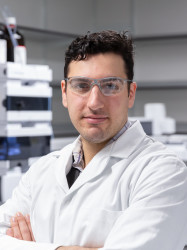BibTex format
@article{Crake:2019:10.1002/smll.201805473,
author = {Crake, A and Christoforidis, K and Gregg, A and Moss, B and Kafizas, A and Petit, C},
doi = {10.1002/smll.201805473},
journal = {Small},
pages = {1--12},
title = {The effect of materials architecture in TiO2/MOF composites on CO2 photoreduction and charge transfer},
url = {http://dx.doi.org/10.1002/smll.201805473},
volume = {15},
year = {2019}
}

